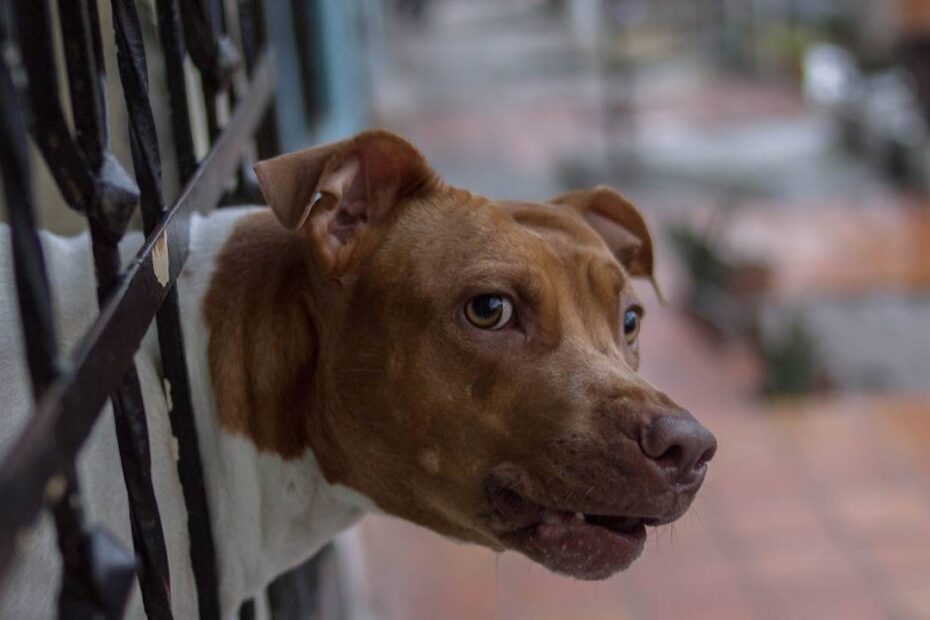This week we’re digging our noses into a topic that’s more intriguing than a hidden treat – the fine line between fear and aggression in our four-legged family members. I’m no dog whisperer (in fact, run a mile from a trainer who calls themselves that – did you read my previous blog on this topic?), but I’ve spent enough time being whacked by wagging tails and deciphering barks to share some insights.
First things first, let’s settle the debate: are dogs more scaredy-cats than fierce lions, or is it the other way around? Well, grab your chew toys and let’s unravel this canine mystery.
Fear, the Sneaky Culprit
Imagine you’re a dog, and your world is suddenly invaded by giants (that’s us humans) speaking a weird language, vacuum cleaners that seem like alien invaders, and thunderstorms that boom louder than a rock concert. It’s enough to make any pup lose their cool!
Fear in dogs is more common than you might think. From fireworks to the mailman’s daily invasion, our furry friends deal with more stress than an overworked cat chasing a lazer pointer (head’s up – don’t use lazer pointers……ever). But here’s the not so secret answer – many behaviours we label as “aggression” are often just Fido’s way of saying, “Hey, I’m freaking out here! I need HELP.”
Think about it: a dog cornered by fear might growl, or even show those teefies. But before you jump to conclusions, consider what’s got them trembling in their paws. It’s like mistaking a Chihuahua for a Doberman – size doesn’t always equal ferocity.
Aggression – The Misunderstood Rebel
Now, let’s talk about aggression. It’s the James Dean of dog behaviours, the misunderstood rebel with a bad rap. We’ve all heard tales of Cujo-like canines terrorizing the neighbourhood, but let’s put things in perspective (if you don’t understand the Cujo reference then use your google foo to have a look at this 1983 film that scared the daylights out of me).
True aggression, where a dog genuinely wants to cause harm, is rarer than a cat that enjoys a good bath. Most of the time, aggressive behaviour stems from fear, anxiety, or frustration. It’s like that one friend who turns into a grizzly bear when they’re hangry – not their best self.
So, why does Rover seem to growl at the neighbour’s poodle or eye your cousin like they’re a trespasser? It’s not because they’re plotting world domination; it’s more likely that they’re feeling overwhelmed, threatened, or just plain scared.
The Not-So-Fierce Majority
Now, don’t go labelling every snarl and woof as an act of war. The truth is, only a tiny fraction of dogs are true-blue aggressors. The rest? Well, they’re just trying to navigate our world and that world can be as unpredictable as a game of fetch in a cyclone. There’s some research that indicates that only 10% of dogs are truly considered “aggressive”, 10% of dogs who are truly “friendly”, and the remaining 80% are selective about who they want to interact with. Sounds a bit like us humans, right?
Next time you witness a canine standoff, resist the urge to send them to anger management classes. Definitely don’t engage a trainer who uses aversive methods as this will make Fido worse in the long run. Instead, consider what might be triggering their inner drama queen. Maybe it’s the neighbour’s cat giving them the stink-eye or the ominous shadow of a garden gnome (or who else had ups scared of the Christmas tree). There are plenty of dog trainers who work with scaredy-cat dogs using humane and ethical R+ methods if you need an extra hand to help Fido learn how manage their big feelings.
In the grand scheme of things, understanding our furballs’ behaviour is like solving a mystery wrapped in a riddle – with a sprinkle of slobber for good measure. So, let’s cut our canine buddies some slack, shall we? They’re not plotting a rebellion. They’re not trying to dominate you (ugh, don’t get me started). They’re just trying to make sense of a world that can be as puzzling as a Rubik’s Cube in the paws of a poodle.
That curled lip or growl are cries for help. It’s up to us to get to know our dog’s body language so that we can intervene before they feel that they have to take matters into their own paws.
Game On! Let’s Play!
Hxx


